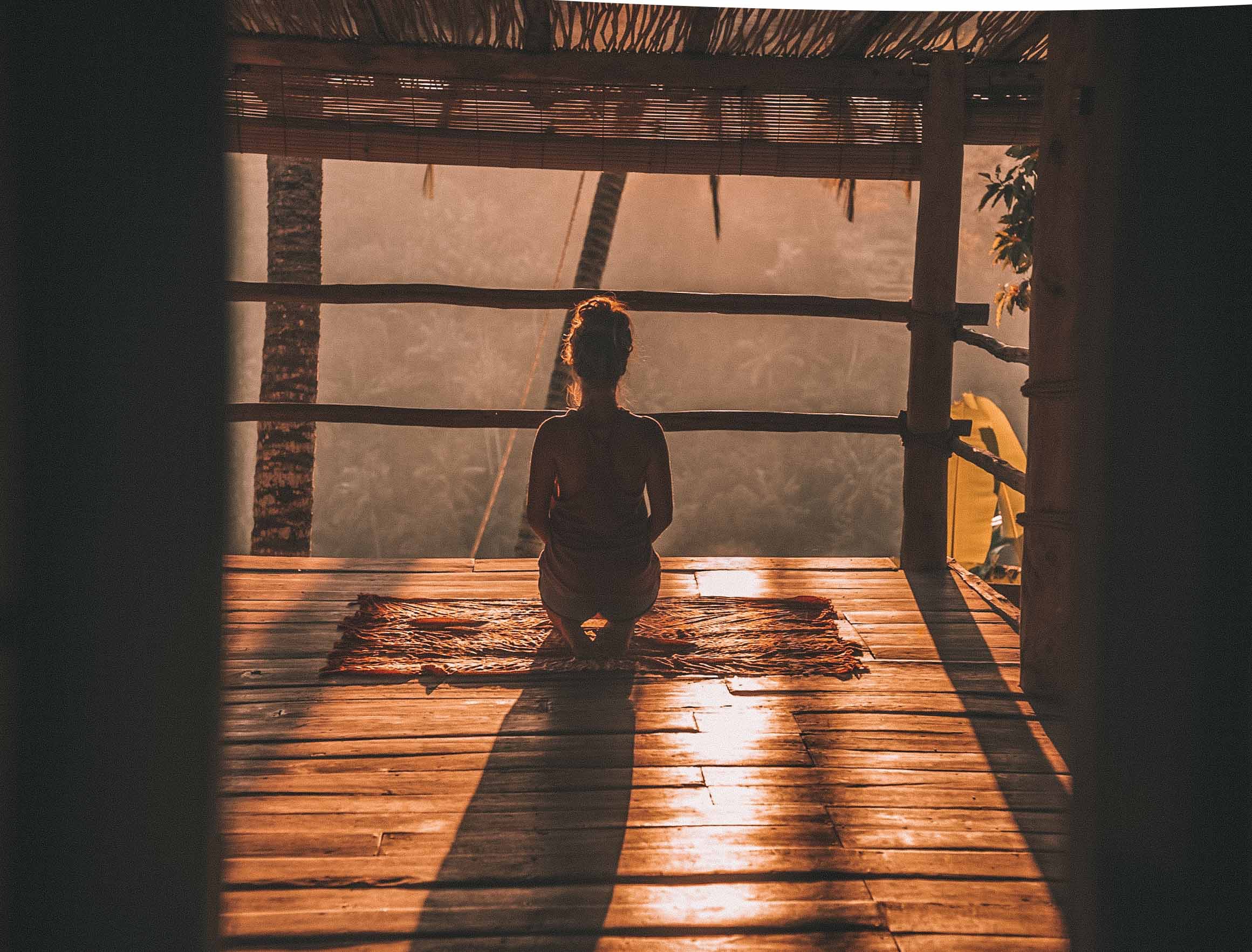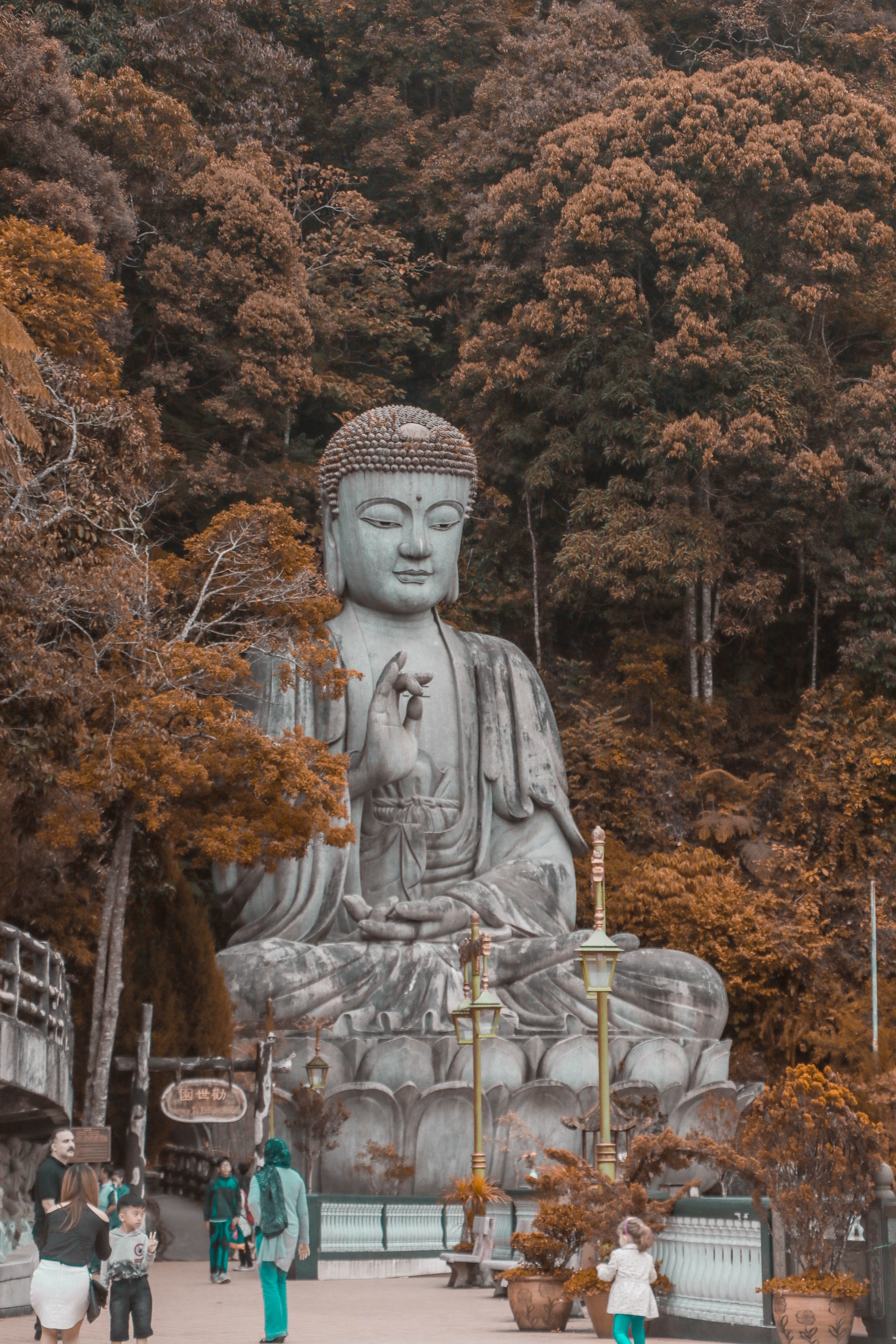
Learn & Practice Mindfulness
When we change the view we have of our life, of existence, of the world we live in, then everything changes. Including the world. But how do you do that? How can you change the way you look at the life?
Besides meditation there is another practice, mindfulness, which, if practiced earnestly, will help you do that. These two: meditation and mindfulness, will gradually – and sometimes in leaps and bounds – help you change your world in an amazing way. How much, and how fast, will depend on how deeply you meditate, how intensely you practice mindfulness, and how happy you want to be.
Mindfulness is the practice of learning to be where you are now. When you are in the supermarket, you should be in the supermarket and only look at what’s going on in the supermarket, and not have your mind all over the place. You should shop and put your whole mind on shopping. When you’re at work, you should just be working and put your whole mind into work. When your mind drifts, you should bring it back to your work. When you’re driving on the freeway to work, you shouldn’t be thinking about work and what you’re going to be doing in the office, you should be experiencing the freeway and the music or tape you’re listening to. When you’re in bed with someone, you should be in bed with them. Experiencing them and not thinking about your job or politics or someone else who you’d rather be in bed with. When you’re out running, you should be involved with running. When you’re dancing, you should be involved with dancing and only that.
Mindfulness comes about through practice, and it’s lots of fun. The benefits are endless, but above other things, it eliminates a tremendous amount of stress. You have stress because you’re putting yourself in too many places at once, you’re thinking about too many things. If you didn’t think, there wouldn’t be any stress.
To Think or Not To Think
Surely, you’d be stress-free if you didn’t think at all. But of course, that’s not realistic and you can’t and don’t need to avoid all thinking: sometimes you need to think. You may need to plan, analyze things – and that’s all useful stuff but you need to carve some dedicated time for those activities, and not use most of your day and pretend that you’re always analyzing and planning.
The majority of the time during our days we’re repeating the same thoughts over and over – that time would be much better spent in a state of awareness. Instead of being on autopilot- as most of us tend to be- you’re monitoring your mind, confining your thoughts to what you’re doing at the moment. Whenever you’re in a room, you should confine your thoughts to that room, unless for some reason you have to anticipate something coming next. In other words, you shouldn’t have your mind drifting all around.

“Even when you are not meditating, you are constantly grooming your mind, you’re
training it to eliminate hate, doubt, fear, anxiety, negative thoughts, emotions
and stages of awareness that limit your consciousness.”

As we go through the day we learn to gain control of our mind, our emotions. During the course of a normal day there will be many times, for example, that we could get angry. As practitioners of mindfulness, however, we will be very careful not to allow our minds to go down that spiral, mainly because they know that anger burns up a lot of energy and we would end up feeling tired and exhausted by the end of those days.
Another reason is that us getting angry doesn’t make other people feel any better either. So we learn to conserve energy in a variety of ways that we learn in our spiritual practice and that way we’re in a nicer state of mind and we feel happy.
So mindfulness is the practice that we engage in at all other times when we’re not formally meditating. It’s an advanced usage of the mind in a variety of different ways — to increase the power of the mind, to develop it fully, and to employ that development in direct physical, mental and psychic ways.
Even when you are not meditating, you are constantly grooming your mind, you’re training it to eliminate hate, doubt, fear, anxiety, negative thoughts, emotions and stages of awareness that limit your consciousness, that bind you to a particular sense of self, and bind you to experience yourself in a world that’s much harsher, much less prettier and much less happier than the one you could be living in.
How to do it:
Mindfulness is passive meditation practice. It’s passive when you’re active. Whether you’re out shopping, talking to someone, riding on the subway, or dodging bullets, you can be meditating. Eventually, passive meditation will become active meditation, and you’ll be actively meditating as you’re washing the dishes or vacuuming the carpet or doing any of the above mentioned things. In the beginning, however, it’s passive, because your energy and your attention are divided between your actions, thoughts, your sensory data, your feelings, locomotive activities, and your practice, your meditation.
The first step is to monitor yourself. Observe when you’re in your car, what you’re thinking about. Stop thinking and be in your car. When you’re in a meeting in your office and someone’s speaking, listen to them and stop thinking five steps ahead or keep waiting for your turn to speak. Stay with them and observe. If you need to do some creative planning, which is necessary sometimes, then take your whole mind, sit down, close the door and do your creative planning. But don’t drift all over the place.
As you’re observing yourself, you need to start observing your thoughts. First of all, you must realize that most of your thoughts – including emotions an feelings – are not your own, but originate from the people nearby or sometimes not so nearby. We are all psychic, so we pick these up, but most of the time we falsely believe that they’re our own and then wonder why we’re in such a bad mood. To counter this, throughout the day you need to be mindful of your thoughts and just bounce out anything negative, anything unhappy, any angry, jealous, or suspicious thoughts, anything that would make you unhappy and destroy your inner calm, that inner equilibrium that you’ve gained from your morning meditation if you practice that. Just blow it out, push it away.
The wonderful thing is, if you keep doing this, eventually you’ll find that you’ll just be happy all the time. After a while, your mind just will automatically filter out these thoughts and negative impressions that you pick up from others, without even having to think about it very much. It’s enjoyable to just simply remove the things from your mind that make you unhappy, to clarify your emotions and allow them to give you the clarity to lead a happy and productive life.
“During the day when you find yourself dwelling on something negative, you need to consciously use your willpower to remove your mind from that which is negative. Whether it’s a jealous thought, an angry thought, a fearful thought – move your mind into the flow of something positive. You must learn not to be attached to other people, to things, to certain types of experiences and learn to allow the flow of life to guide you wherever it is supposed to and accept with equanimity, with balance, with poise whatever happens.” -Rama.
So to become happy, as strange as it sounds, all you need to do is to be happy. Really. Dance with yourself inside your mind. And focus on beauty all around you. Look at things, feel things, stop worrying about tomorrow, stop thinking about yesterday. Mindfulness is to be here now, in the moment. Focus on this moment, hold out your hand and see what it feels like. Go look at some grass, talk to a palm tree, outrun a Ferrari. Experience life. That’s it. Keep your mind on what you’re doing and look at it. And keep looking until you see clearly. See the beauty of all things, which will make you happy. And for five minutes a day sit there and practice being happy when you do meditation. Smile, physically smile for five minutes, and focus on happiness. And if you do all these things, that will be a great start.
